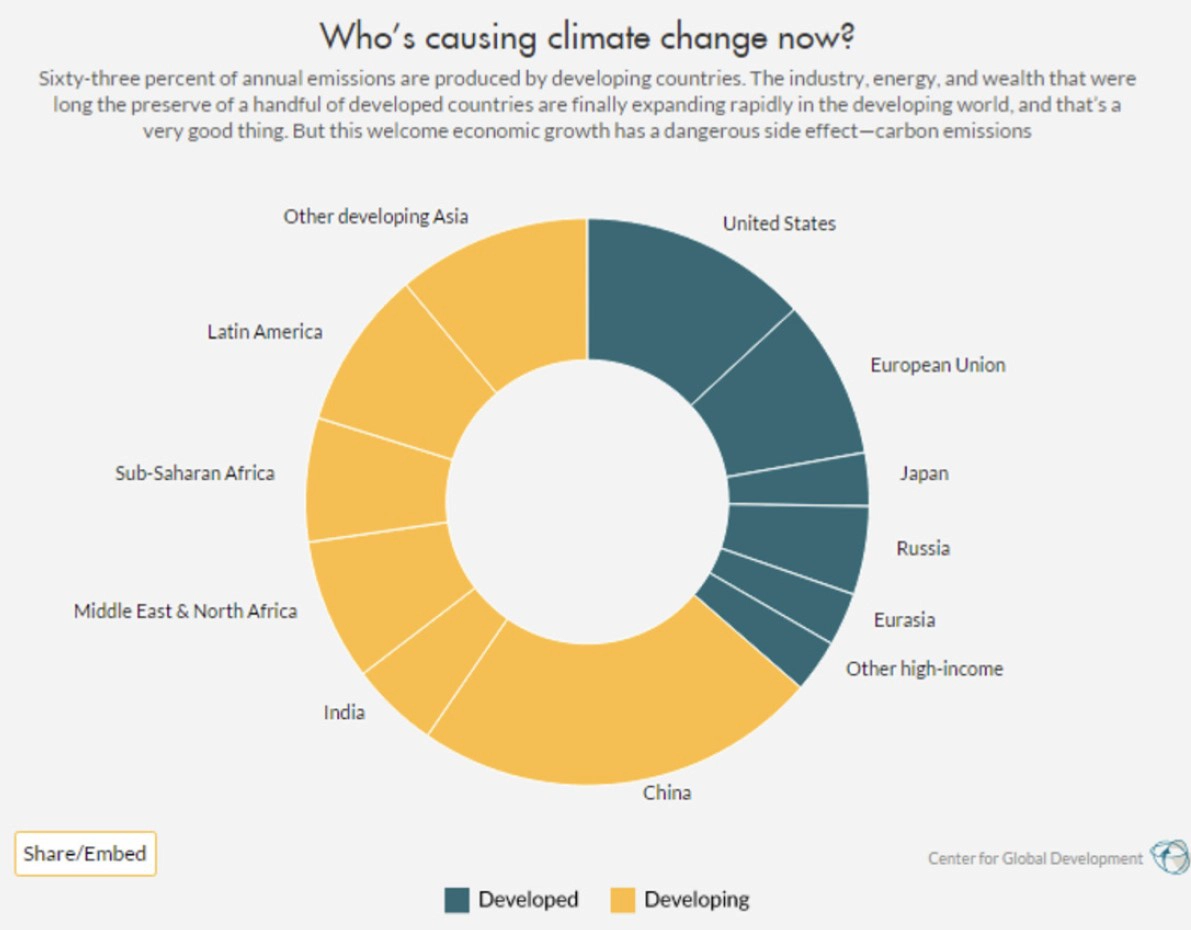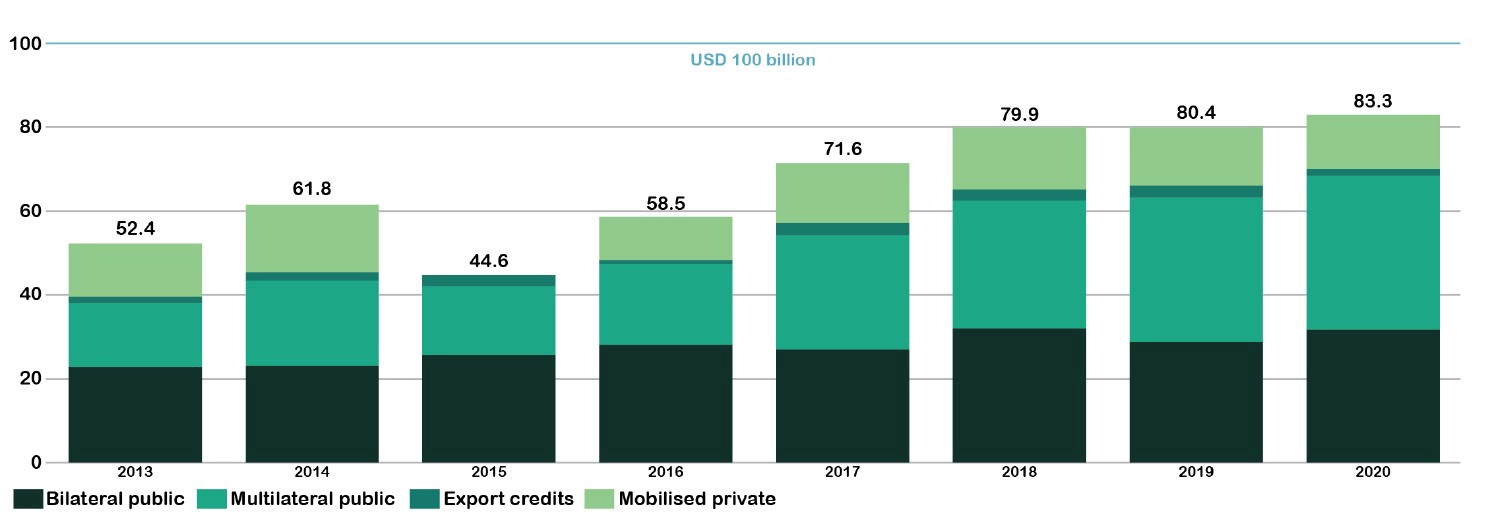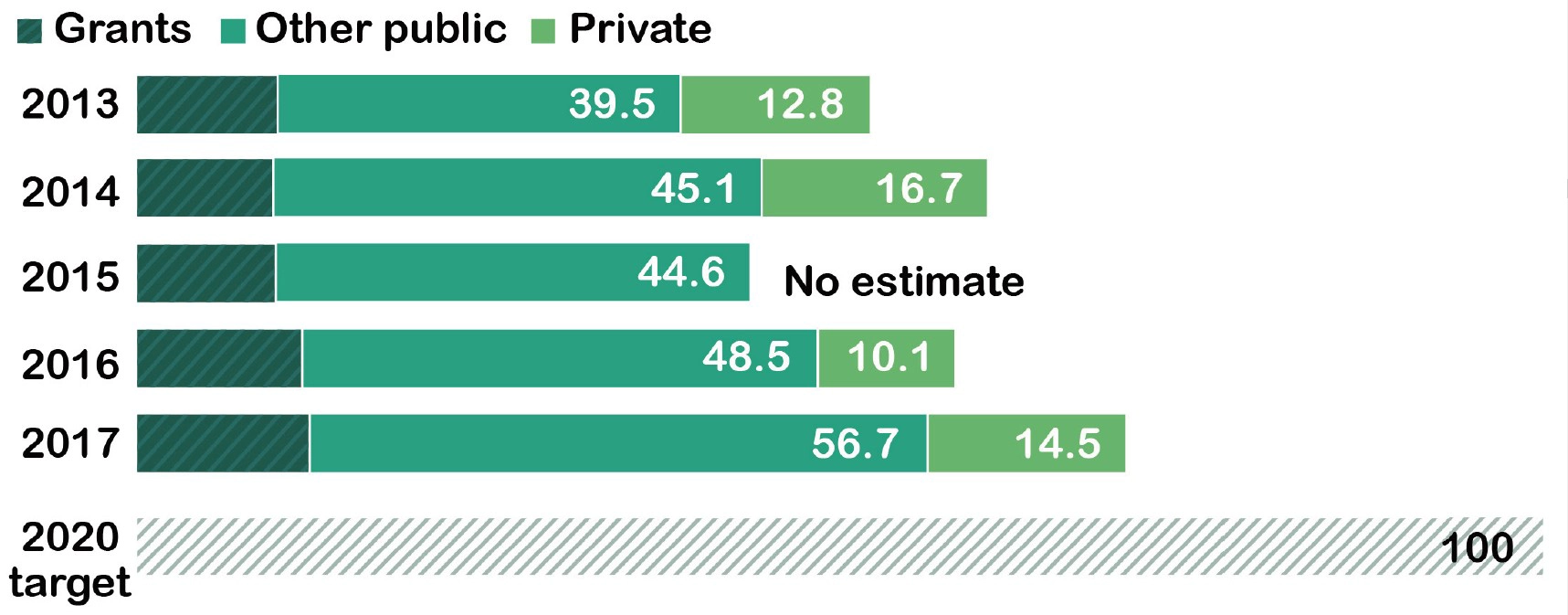I Mother Earth and her children I Climate Change Funds Accessibility to Developing Countries

I Mother Earth and her children I Climate Change Funds Accessibility to Developing Countries
Climate change and the contribution of developing countries?
Developing countries have faced continuous pressures since industrialization. Because of power monopolization and poor political institutions, they have been left behind by industrialization. These pressures include the need to develop good policies, good institutions, and foster economic growth with no proper foundation. In recent decades, however, a new pressure has been added: climate change.
The real question is, what is the actual contribution of developing countries to climate change? It is clear that industrialization has had multiple negative impacts on climate change, such as pollution, specifically fossil fuel emissions, overpopulation, and deforestation. In reality, the countries that have contributed the most to the planet's current state are the developed or wealthier countries.
If we fast forward to the present, developing countries are also expected to follow these international climate change ambitions, meaning they must cut their current emissions now. According to the Center for Global Development (CGD), sixty-three percent of annual emissions are produced by developing countries. On the one hand, developing countries now have the opportunity to rapidly expand in the developing world, but the side effect, of course, is carbon emissions.

Figure1: Contribution of carbon emissions from developing and developed countries / Source: Center for Global Development
The world's poorest countries, or most developing countries, have contributed the least to our current climate change issue. However, they feel the greatest impacts. Because they were able to reap the benefits of early technology, developed countries now have the infrastructure and finances to make certain adjustments and try to mitigate climate change. Developing countries are reaching their era of economic development, but this does not change the fact that they are the ones most greatly affected by climate disasters. This is because people in these countries live in areas prone to floods, depend on industries such as agriculture and the environment, and some countries even lack access to improved water and sanitation.
We are now in an era where developed countries promote international climate action policies and it is highly sought that reducing carbon emissions is a collective effort. This collective effort is necessary due to the past contributions of developed countries that have greatly impacted our planet. The majority of past carbon emissions came from our current developed countries.
Current climate change policies and how it helps?
Climate change policies were put into play as a form to provide a framework for countries to have a foundation or a backbone on how to achieve a net-zero emissions economy by 2050. Since the Paris Agreement in 2015, climate change policies have been a learning and trial-and-error experience for most countries. Especially because most countries have faced different aspects of climate change as well as specific industries that need transitions. This backbone and experimenting has also led to modification or knowledge sharing between different countries with the main aim of reducing our carbon emissions to net zero.
Are these policies really helpful? The answer is quite clear, yes. One of the main needs for these policies is to promote economic growth in an environmentally savvy way. The idea of reaching net zero is not to put an end to all industries that release carbon emissions but to find a transition or alternatives with the same results. These policies are also taken into consideration to enforce the idea of responsible sustainable economic growth without sacrificing the resources of neighboring countries and themselves.
As mentioned previously, the problem is that most policies do provide the protection and guidance necessary for a cleaner future. These policies have been placed into power postindustrialization era, when most developed countries have become economically stable and damage has already been done. Presently, the damage experienced by climate disasters is on a greater scale in developing countries than in developed countries. Developing countries have been given the opportunity to use new technologies to develop economically; but will they be around to reap the benefits?
The goal of most developing countries is to decrease their poverty rate which means increasing their carbon emissions. As can be seen by the graph presented above, now developing countries have contributed a bit more than half of the recent carbon emissions. The reality is that developing countries cannot afford to stop using fossil fuels. The use of fossil fuels is what helped many countries to grow, however, in developing countries, it would be difficult to even sustain themselves without fossil fuels. Currently, the richer countries are now investing in alternative energy sources however some developing countries have not even fully harnessed fossil fuels. The thought of having developing countries skip fossil fuels without proper frameworks or financial support is impossible.
Climate Financing for Developing Countries
Energy is but a fragment of what is needed to see a difference in our environment. Such a task requires substantial financing which most developing countries do not have. Creating a green transition within a nation requires substantial funding. At the 15th Conference of Parties (COP15) of the UNFCCC in Copenhagen in 2009, developed countries committed to a collective goal of mobilizing USD 100 billion per year by 2020 for climate action in developing countries; some developing countries would argue this is not enough. In addition, the promised amount was not met.
Below are the results from a report released by the Organisation for Economic Co-operation and Development on September 22nd of 2022.

Figure2: Climate finance for developing countries / Source: OECD (2022), Aggregate Trends of Climate Finance Provided and Mobilised by Developed in 2013-2020.
Note: Climate finance provided and mobilised by developed countries, in USD billions The gap in the private finance series in 2015 is due to the implementation of enhanced measurement methodolgies. As a result, private flows for 2015-18 cannot be directly compared with private flows for 2013-14.
OECD indicates that there are four distinct components of climate finance provided by developed countries which are:
-Bilateral public climate finance provided by developed countries' institutions, notably bilateral aid agencies and development banks;
-Multilateral public climate finance (provided by multilateral development banks and multilateral climate funds), attributed to developed countries;
-Climate-related officially supported export credits, provided by developed countries' official export credit agencies, and;
-Private finance is mobilized by bilateral and multilateral public climate finance, attributed to developed countries.
From what can be seen from the OECD climate finance analysis, in 2020 we are yet to meet the promised amount. However, the OECD also mentioned that based on recent pledges made by bilateral and multilateral public climate finance providers; it indicates that the USD 100 billion could be met as of 2023.
"We know that more needs to be done. Climate finance grew between 2019 and 2020, but as we had expected, remained short of the increase needed to reach the USD 100 billion goals by 2020," OECD Secretary-General Mathias Cormann said.
with their stated commitments in the lead-up to COP26, which would mean the USD 100 billion goal would be reached from 2022. This is critical to building trust as we continue to deepen our multilateral response to climate change."OECD Secretary-General Mathias Cormann continued.
Despite efforts to create such financial assistance. Negotiations were never made clear on how to measure the country's pledges and by what means the funds would be provided to developing countries. Oxfam's Climate Finance Shadow Report 2020 estimates that 80 percent ($47 billion) of all reported public climate finance was not provided in the form of grants – but mostly as loans. Around half of this ($24 billion) was non-concessional, offered on ungenerous terms requiring higher repayments from poor countries. The actual 'grant equivalent' once the loans were replayed and interest deducted was less than half of the amount reported.
Tracy Carty, Senior Policy Advisor on Climate Change at Oxfam and one of the report authors indicates that Climate finance is a lifeline for communities facing record heat waves, terrifying storms, and devastating floods. Even as governments struggle with COVID-19, they must not lose sight of the mounting threat from the climate crisis.
"The excessive use of loans in the name of climate assistance is an overlooked scandal. The world's poorest countries, many of whom are already grappling with unsustainable debts, should not be forced to take out loans to respond to a climate crisis, not of their making."

Figure3: Finance from developed to developing countries / Source: OECD
Note: In 2017, around $71 billion flowed from developed to developing nations, according to an OECD estimate - although much was in loans, not direct grants. Updated methods for calculating private finance mean 2016-17 totals cannot be directly compared with earlier years.
Climate finance should be given as grants rather than loans. Is it fair for poorer countries to need to pay back a debt that they are using to mitigate the effects of issues that were not of their cause, to begin with?
Just as it is important to properly finance such projects, it is also important to make sure that the financing is being used the way these developing countries need. It is definitely of big assistance to contribute to projects such as irrigation, improved seed varieties, strengthened health systems, and greater access to finance and telecommunications, however, there is more to climate change than just this.
Developing countries face climate disasters and due to climate change, the frequency of these disasters has remarkably increased. Mia Amor Mottley said in COP 26, " Loss and damage are three to four times more on the frontline than the backline and in many places like the Caribbean, climate and other natural disasters account for 50% of the long increase in public debt. On the frontline, the climate crisis is leading to a silent debt crisis which will lead to a development crisis."
In the report Cost of Delay, it is reported that Since 1991, developing nations have seen 79% of all recorded fatalities and 97% of all documented cases of individuals being negatively impacted by weather extremes. The analysis also reveals a more than twofold increase in the frequency of extreme weather and climate-related events that developing nations have experienced throughout that time, with over 676,000 fatalities. It is unfair that polluters who are disproportionately to blame for the rising greenhouse gas emissions continue to make great profits while countries that are vulnerable to climate change are left to pay for the negative effects of the climate that result in the loss of lives, homes, and jobs.
Each degree of warming has a greater impact on the climate, with climate change losses in developing countries estimated at $290-580 billion by 2030. These estimates do not include non-economic losses and damages such as psychological impacts and biodiversity loss. COP27 had historically agreed to give developing nations affected severely by climate disasters "loss and damage" funds.
"Specific pledges can help take us forward. I commend Rishi Sunak's announcement that the United Kingdom will triple its adaptation finance by 2025, going even beyond the promised last year in Glasgow," Sameh Shoukry said.
Germany committed $170 million for loss and damage at the same time as Belgium announced €2.5 million expressly for Mozambique, which endured devastating losses owing to heavy rains last year. For loss and damage, Austria also donated $50 million, while Scotland, which had already committed to contributing £2 million, announced an extra $5 million. In conclusion: five European nations have made commitments to deal with loss and damage thus far: Austria, Scotland, Belgium, Denmark, and Germany.

Figure4: Antenna bent into building due to intense winds of Hurricane Lisa in Belize City, Belize / Source: Ambergris Today
"Climate disasters leave a long shadow … for decades, years or even generations, and there is a growing recognition that we cannot leave vulnerable communities who have done little for this crisis to deal with these global crises on their own," said Theresa Anderson, Climate Policy Coordinator from NGO Action Aid during COP27.
Wealthy polluting nations must look beyond themselves and acknowledge the significance of a new financial mechanism that can assist devastated nations in picking up the pieces and recovering in the wake of climate disasters. However, it is a step on the right track. Although there is still a long way to go in terms of climate justice. Developing countries are beginning to speak up. The truths are being spoken and the developed countries are now forced to act. Climate change is not one country's problem. It should and will continue to be a collective effort.
With the proper support from developed countries, developing countries may have the opportunity to not only survive loss and damage, or sustain themselves but be able to work on projects that provide economic development. We can only hope that with every cope and the coming years the finances provided to developing countries also are properly fitted to the country's needs.

Anwar Wade
Anwar Wade, a Belizean national, has been residing in Taiwan for six years since 2017. He recently completed his undergraduate program in Bioenvironmental Systems Engineering at National Taiwan University. Passionate about climate justice, Anwar has immersed himself in diverse domains during his time in Taiwan. He has garnered invaluable experience in environmental consulting, non-profit organization management, environmental journalism, and quality engineering. Additionally, he had the privilege of applying his studies and exploring sustainability practices during a research trip to India. This experience fueled his desire to approach environmental sciences from a more social science perspective.
Looking ahead, Anwar envisions furthering his studies in sustainable enterprise or environmental and societal governance. He aspires to continuously refine his writing skills to inspire and inform people about climate change. Beyond his professional and academic aspirations, Anwar finds solace in the outdoors, engaging in activities such as hiking, river tracing, and bouldering. In his free time, he actively contributes to communities and dog shelters in Taiwan, seeking to make a positive impact beyond his professional endeavors.
More related articles
